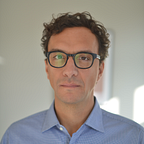How New York City procured innovation on gunshot detection
Cities can use a series of different approaches to buying innovative products and services. New York, for example, uses demonstration projects to allow for the short-term, small-scale evaluative piloting of new solutions. The advantages of this path are illustrated below through the example its recent procurement of ShotSpotter, a detection and localization system for gunshots.
Demonstration Projects
“A demonstration project is a short-term, carefully planned, pilot exercise designed to test and evaluate the feasibility and application of an innovative product, approach or technology not currently used by the City.” This provides a way to pilot and evaluate the feasibility of solutions at a small scale and without large expenditures or high risks. This path is designed to give the City the maximum amount of flexibility and learning opportunity.
In order to qualify as a demonstration project, the initiative must be short term (less than three years); it must be designed to test and evaluate the feasibility and application of an innovative product, approach or technology; and the specific solution must not be currently used by the City.
In terms of contracting, the process for beginning a demonstration project can begin either with a solicitation from the City or a proposal from a company. In either case, the City must publish a notification in the City Record. The notice can identify a vendor the City wants to begin negotiations with or it can be general, asking for expressions of interest. In either case, the City must assess all expressions of interest before beginning contract negotiations. Once contract details are finalized, approval processes can take 30–90 days.
In terms of timing, demonstration projects allow for an initial testing and evaluation period of up to three years. This gives the project enough room to develop sufficiently and collect required data. When required, this can be extended by up to one year to allow for delays or any additional evaluation which may be required.
Given that successful demonstration projects are designed to lead to procurement, there may also be room to extend the projects for the time necessary for their full procurement. This helps ensure the continuity of service provision while the solution moves from demonstration to procurement.
Demonstration Project to trial the use of gunshot detection systems
The New York Police Department (NYPD) has tested a variety of gunshot detection and localization systems since 2009. The piloted systems were generally deemed unsatisfactory because they could not accurately distinguish between gunfire and other sounds, such as fireworks or cars backfiring, meaning that police received too many false positive notifications.
In early 2015, the NYPD used a demonstration project path to run a pilot with a new provider. The new technology uses discreetly placed microphones to identify, triangulate, and precisely locate gunshots in cities. This detection system uses an entirely different technological, adjudicatory, and financial model from the systems previously tested by the NYPD. An additional advantage is that analysts listen to the recorded alerts and screen out false positives. The technology is currently used in over 80 cities in four countries.
The demonstration project contract allows the NYPD to test the system for two years, over a 15 square mile area of New York City. The two-year pilot is valued at USD 1,500,000, and includes about 300 sensors which will be installed in Brooklyn and the Bronx. Thanks to the demonstration project approach, the NYPD is now able to closely monitor and evaluate the detection system without excessive financial investment of risk. The scale of the demonstration means it can be tested without fully committing to use it in all parts of the city, which also means that there is comparative evaluation data from elsewhere in the city.
If the pilot proves successful, the NYPD can procure a gunshot detection and location system over a wider area through competitive solicitation. During this procurement process, the contractual flexibility of a demonstration project will help ensure the continuity of service delivery. Meanwhile, the possibility of extending the pilot reduces the risk of the contract expiring during the competitive solicitation process. The system can thus be reliably and integrally incorporated into the policing strategy for a comprehensive evaluation, without risk of interruption.
So far, the results have been positive and the NYPD is exploring options to extend the area of the pilot. The pilot went live mid-march 2015, and by the second of April 2015, 55 gunshot incidents had been recorded, while only 12 calls to notify police were made. This means police were made aware of 80% more gunshots. This information not only helps them respond to gunshot situations they would previously be unaware of, but also allows for the development of a proactive, data-driven approach to the areas with most gun crime.
Takeaways
Demonstration projects offer New York City Council departments a legal path to experiment with innovative solutions. They offer the contractual and procedural flexibility to start small, but scale easily if successful. This approach allows cities to test things on-site without excessive financial or contractual risk.
